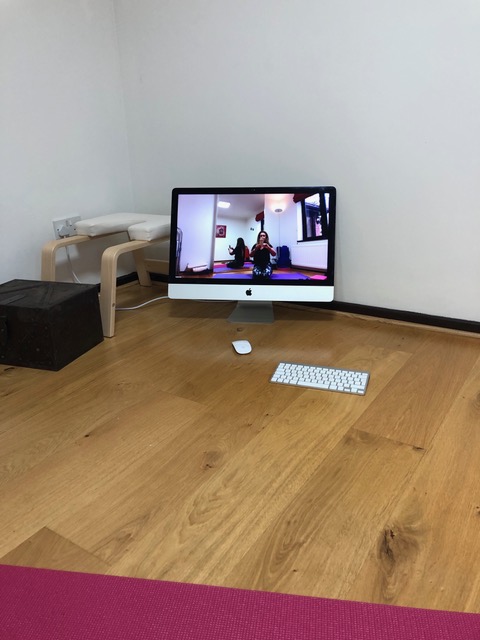Are you someone who couldn’t have imagined doing a yoga class on-line? Were you disenchanted with trying to practice using YouTube videos? Prior to late March had you heard of Zoom?
If your answer to those questions is “no”, you’re not alone and let’s take a breath and acknowledge that we have all come a very long way since March. Students and teachers of all ages and experience have managed the technology. I think we can all remember that first time we saw our students or classmates on-line – when we uttered those words “oooh, I can see you”. “Can you see me?” “I can’t hear you – what do I do now”? “move your screen – I can’t see you”? We laughed at the unexpected interruptions from pets, children, partners, housemates etc. We’ve all been frozen in time when our wifi has let us down – which is a teacher’s worst nightmare. Many of us (me included) thought it was all going to be short term and we’d be back to normal by May.
As the UK and indeed the world starts to slowly emerge from lockdown we are all taking those tentative steps to establishing the new normal. In some parts of the world yoga studios have been open for a few weeks. In the UK gyms, community halls and yoga studios will soon be permitted to open and operate subject to social distancing guidelines and risk assessments to make premises and businesses “COVID secure”. So, as studio owners, teachers and students start to look at the shape of classes to come and work out that “new normal” let’s explore what that may be?
First we need to look at distancing, cleaning and costs? For those studio owners or teachers who have packed mats as tightly as possible there is an obvious change which students are likely to see as an improvement – far more space between mats. However, spacing students 2m apart (or even 1 m + apart) creates its own challenge which is significantly smaller class size/loss of revenue. Students are not going to pay significantly more than they were spending on classes pre lockdown – and in fact a great many will have suffered a downturn in income and will be looking to reduce discretionary spending. Studios and halls will also need to space out classesin order to allow for cleaning and ventilation between classes so that means fewer classes. So, will there be sufficient studio classes to satisfy demand?
Turning to demand, will it exceed supply and students become frustrated with wait lists? That’s likely to be the case if everyone wants to rush back into studio, but will they? This is a hard one as many associate yoga with in-person classes where we know our teacher, we see the others we practice with and we have the social interaction. Our teacher comes around to adjust our postures and we feel safe knowing that the teacher was there with us ready to offer gentle guidance, encouragement and ensure a safe practice. So in theory we should all be desperate to get back to our old way of practicing – right? Not necessarily – we are emerging from the safety of our homes, some are anxious or fearful, have underlying health issues or live with those who do, and many are getting used to a new way of practicing. Very often teachers have welcomed new students who are new to yoga and probably wouldn’t have tried had they not been confined to barracks for several months, working from home or on furlough.
Students have worked out that they can roll out of bed and into class before they start their working day or close the laptop and go straight to class – no need to change from yoga gear into a suit or vice versa and no time spent getting to class. Although many have suffered changes to their financial circumstances most on-line classes are offered at a rate that takes into account the reduced costs of operating from the sitting room/bedroom/study studio. Experienced yogis have been able to explore new styles of yoga and practice with teachers they weren’t able to before – and with the aid of payment technology it’s not restricted to the UK. The world has opened up for teachers too with a plethora of on-line training courses that allow additional skills to be obtained at a fraction of the cost of travelling across the country or overseas for that special course or workshop.
I am certain we will see some students who want to get back into studio as soon as possible, some who will prefer to wait until social distancing rules relax and others who are finding that practicing on line fits with their lives/offers more flexibility than before and that as is often the case supply and demand will come into balance. It may take a while though and meanwhile teachers perhaps need to “go with the flow” and look at a mixed offering with some classes in studio and some remaining on-line. The hybrid of live streaming studio classes might be an option but needs more thought – from privacy, legal and tech perspectives.
The world has changed but as human beings we’ve adapted very well so far – let’s face it, some of us remember life before computers and look what we’re up to now? Hopefully our new yoga world will shape out to be just fine but will it ever go back to as it was BC (Before COVID)? I suspect not.
Let’s see if we can embrace the change and make it work?
